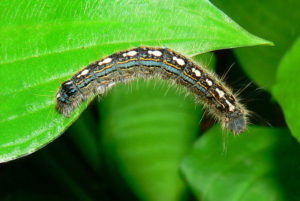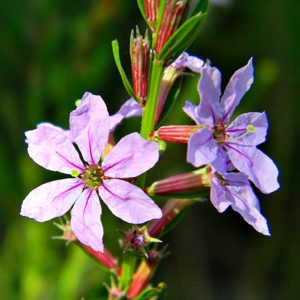VT Climate Action Commission,
Outbreak of Tent Caterpillars, and
Rediscovery of Winged Loosestrife
by Kirsti Blow, Center for Research on Vermont
Following 14 states’ creation of the U.S. Climate Alliance in a vow to uphold the 2015 Paris Agreement, Governor Phil Scott has established a Vermont offshoot—the Vermont Climate Action Commission.
Composed of 21 members, four of whom work for Scott—and none of whom were on former Governor Shumlin’s previous climate cabinet—the commission’s main objectives will likely be to enforce tax credits or sales tax exemptions on electric and hybrid vehicles.
Scott vehemently rejects carbon taxes and the expansion of wind energy, instead prioritizing affordability and growing Vermont’s economy and businesses. Still, he has expressed a desire to maintain Shumlin’s lofty goal of running the state on 90 percent renewable energy by 2050.
A crucial component of the state’s economy, however, is currently under siege—an outbreak of forest tent caterpillars is ravaging northeastern Vermont’s sugar maples. The caterpillars feast on the leaves, reducing tree growth and affecting maple tapping—an $140-million-dollar industry each year.
Sugar-makers emphasize the fiscal importance of a healthy stock of sugar maples. Every lost tree represents a lost tap, which spells doom for annual revenue in years to come.
Last year, the caterpillars defoliated 25,000 acres of Vermont’s forests. Most trees can survive defoliation, even through repeated attacks—but an exceptionally persistent outbreak could leave trees at risk of mortality.
Because forest tent caterpillars are a native species, forests are able to naturally regulate populations in a cyclical fashion, threatening them with virus, fungus, and a “friendly fly” species that preys on the caterpillars.
If old patterns remain true, the population surge should recede within a year or two, but not before temporarily increasing in magnitude.
Landowners in northeastern and north-central Vermont treated roughly 3,600 acres of forest in mid-May to early June, while the caterpillars were feeding, as a precautionary measure. It remains to be seen whether their efforts paid off.
All is not lost for the state’s plants, though—in fact, a recent rediscovery of winged loosestrife in Monkton has ignited hope for an improving ecosystem.
Winged loosestrife was considered to be extirpated in the state due to unfit climatic conditions until two botanists stumbled upon it while hiking in the Raven Ridge Natural Area. The plant, a cousin of the more common purple loosestrife, had not been witnessed in Vermont since 1979. Before that, it had only been spotted eight times on record.
Nectar-collecting insects, especially bumblebees, can benefit from its return to the ecosystem, with the plant’s multiple flowering stems providing a valuable source. Considering rusty patched bumblebees’ perilous status as an endangered species, the presence of nectar-rich plants is more important than ever.
As the summer comes to a close and the vibrant plants dotting the landscape fade and morph with the seasons, micro-ecosystems will undergo nearly imperceptible changes in response. Time will tell whether the state’s sugar maples will explode into their typical fiery foliage, and whether winged loosestrife will make its comeback in other corners of Vermont.
Kirsti Blow is a sophomore public communication major at University of Vermont. She writes the briefs for UVM’s Vermont research newsletter published by the Center for Research on Vermont. Learn more at http://www.uvm.edu/~crvt/. Kirsti is also a musician in the Burlington area.










Leave a Reply